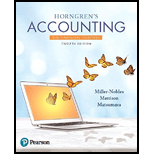
Cash Ratio: A ratio that reflects the ability to pay current liabilities by cash and cash equivalents is called cash ratio. It is useful to evaluate the cash available as cash is an important factor for day to day operations for any business.
Acid-test Ratio: It is a ratio used to determine a company’s ability to pay back its current liabilities using only liquid assets that are current assets except for the inventory and prepaid expenses. Also known as quick ratio, it is a part of liquidity ratios, used for the evaluation of a company’s liquidity.
Inventory Turnover: It is a part of efficiency ratios used during the process of ratio analysis. It reflects the number of times a company’s inventory is converted into sale during a particular period. The cost of goods sold is divided by average inventory to get the value of inventory turnover.
Days’ Sales in Inventory: This is also a key ratio and determines the number of days a company needs to completely turn its inventory into a sale. Inventory turnover ratio works as input to calculate days’ sales in inventory.
Days’ Sales in Receivables: This ratio is calculated to know the number of days required to collect the payment for credit sales by a company. It is also called average collection period. It reflects the quality of the debtors or
Gross Profit Percentage: Also known as gross margin percentage, this ratio evaluates the profitability of each dollar of sale. Gross profit is the excess of revenue over the cost of goods sold so companies are very keen to have a higher gross profit percentage. It enables them to cover the operating expenses related to business.
a.
To Compute: The current ratio of company V for the current year.
b.
To Compute: The cash ratio of company V for the current year.
c.
To Compute: The acid-test ratio of company V for the current year.
d.
To Compute: The inventory turnover of company V for the current year.
e.
To Compute: The days’ sales inventory of company V for the current year.
f.
To Compute: Days’ sales in receivables of V Company for the current year.
g.
To Compute: Gross profit percentage of V Company for the current year.
Want to see the full answer?
Check out a sample textbook solution
Chapter 17 Solutions
Horngren's Accounting, The Financial Chapters (12th Edition)
- I am looking for the correct answer to this general accounting problem using valid accounting standards.arrow_forwardPlease given correct answer for General accounting question I need step by step explanationarrow_forwardPlease explain the solution to this financial accounting problem with accurate principles.arrow_forward
- General accountingarrow_forwardHello tutor please given General accounting question answer do fast and properly explain all answerarrow_forwardChalmers Corporation operates in multiple areas of the globe, and relatively large price changes are common. Presently, the company sells 110,200 units for $50 per unit. The variable production costs are $20, and fixed costs amount to $2,079,500. Production engineers have advised management that they expect unit labor costs to rise by 10 percent and unit materials costs to rise by 15 percent in the coming year. Of the $20 variable costs, 25 percent are from labor and 50 percent are from materials. Variable overhead costs are expected to increase by 20 percent. Sales prices cannot increase more than 12 percent. It is also expected that fixed costs will rise by 10 percent as a result of increased taxes and other miscellaneous fixed charges. The company wishes to maintain the same level of profit in real dollar terms. It is expected that to accomplish this objective, profits must increase by 8 percent during the year. Required: Compute the volume in units and the dollar sales level…arrow_forward
- After describing a threat/risk in either the revenue cycle (i.e., in sales and cash collection activities) or the expenditure cycle (i.e., in purchases or cash disbursement activities). What are specific internal controls that might be applied to mitigate each of the threats we've identified?arrow_forwardCompare and contrast the procedures for lodging an objection in Jamaica with those of Trinidad and Tobago.arrow_forwardThe actual cost of direct labor per hour is $16.25 and the standard cost of direct labor per hour is $15.00. The direct labor hours allowed per finished unit is 0.60 hours. During the current period, 4,500 units of finished goods were produced using 2,900 direct labor hours. How much is the direct labor rate variance? A. $3,625 favorable B. $3,625 unfavorable C. $4,350 favorable D. $4,350 unfavorablearrow_forward

 AccountingAccountingISBN:9781337272094Author:WARREN, Carl S., Reeve, James M., Duchac, Jonathan E.Publisher:Cengage Learning,
AccountingAccountingISBN:9781337272094Author:WARREN, Carl S., Reeve, James M., Duchac, Jonathan E.Publisher:Cengage Learning, Accounting Information SystemsAccountingISBN:9781337619202Author:Hall, James A.Publisher:Cengage Learning,
Accounting Information SystemsAccountingISBN:9781337619202Author:Hall, James A.Publisher:Cengage Learning, Horngren's Cost Accounting: A Managerial Emphasis...AccountingISBN:9780134475585Author:Srikant M. Datar, Madhav V. RajanPublisher:PEARSON
Horngren's Cost Accounting: A Managerial Emphasis...AccountingISBN:9780134475585Author:Srikant M. Datar, Madhav V. RajanPublisher:PEARSON Intermediate AccountingAccountingISBN:9781259722660Author:J. David Spiceland, Mark W. Nelson, Wayne M ThomasPublisher:McGraw-Hill Education
Intermediate AccountingAccountingISBN:9781259722660Author:J. David Spiceland, Mark W. Nelson, Wayne M ThomasPublisher:McGraw-Hill Education Financial and Managerial AccountingAccountingISBN:9781259726705Author:John J Wild, Ken W. Shaw, Barbara Chiappetta Fundamental Accounting PrinciplesPublisher:McGraw-Hill Education
Financial and Managerial AccountingAccountingISBN:9781259726705Author:John J Wild, Ken W. Shaw, Barbara Chiappetta Fundamental Accounting PrinciplesPublisher:McGraw-Hill Education





